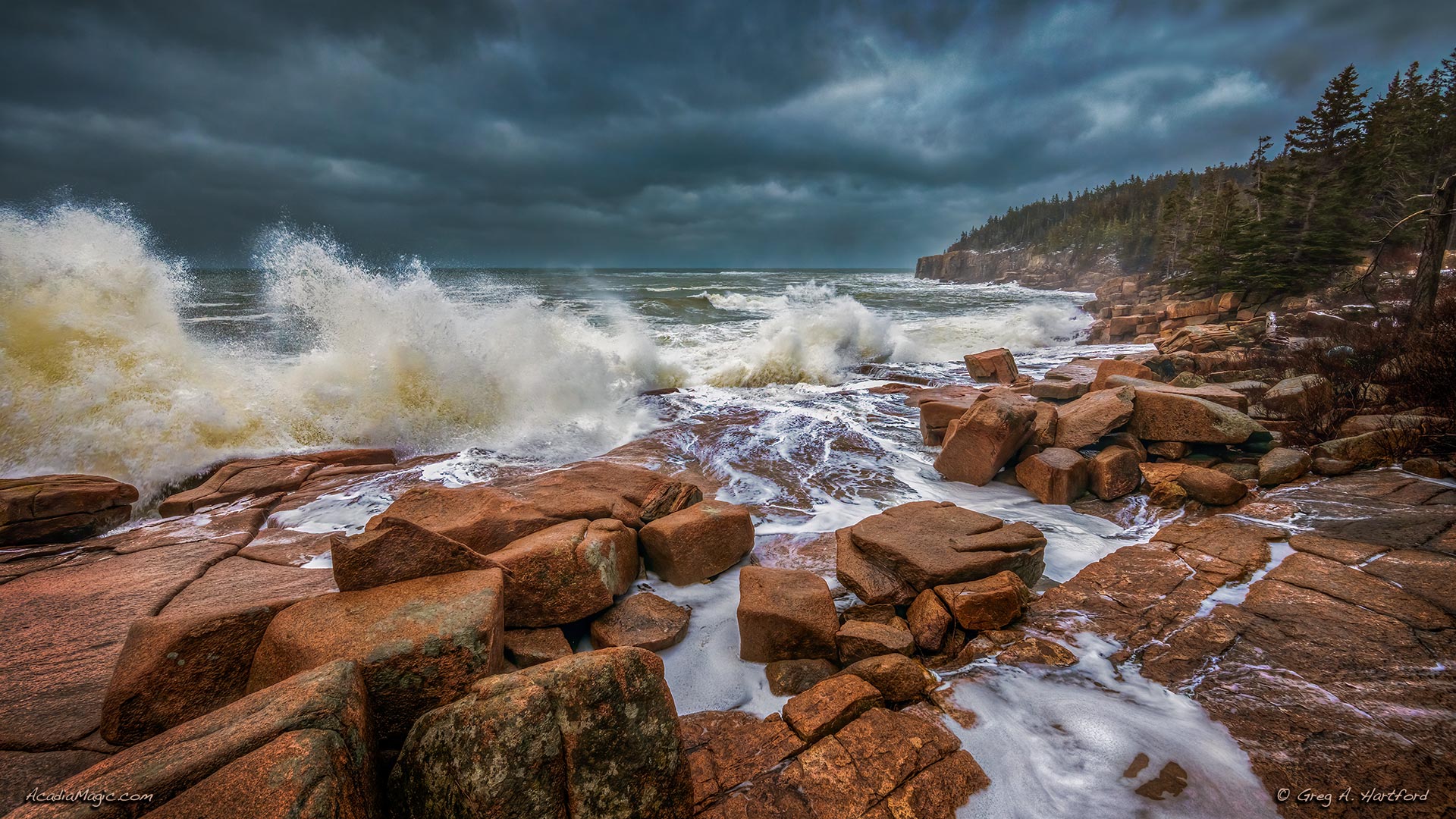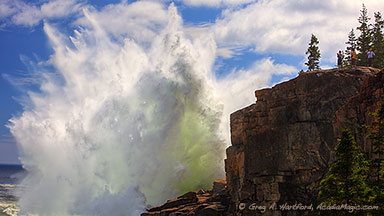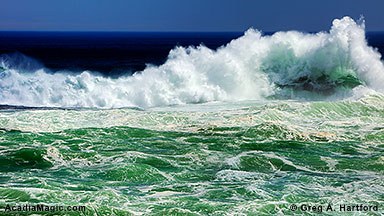Wave Erosion
One of the most noticeable features in most photos of Otter Cliff, along with the headland itself, are the thousands of boulders in the foreground that are in the small cove immediately to the north. Over countless centuries, the rocks have been pounded by the sea and eroded by both water and against each other after being deposited by huge glaciers that once moved across the land here on the island. When the light is low on the horizon, the warm sunlit sides on the left contrast with the cool shadow sides on the right and these round shapes contrast further with the rugged and weathered vertical granite cliffs set ablaze by the rising sun. The viewing of this can quicken the heart and and mind, creating lasting impressions of millennium condensed into one's own life. View these boulders in the larger images above.







